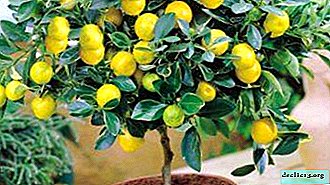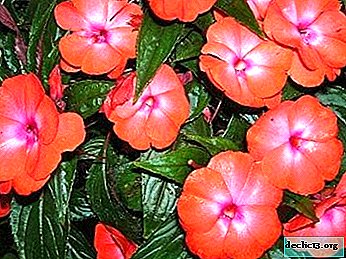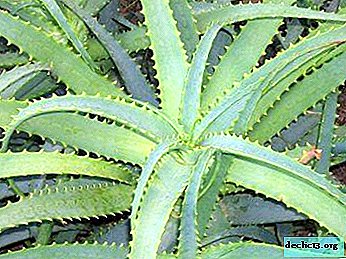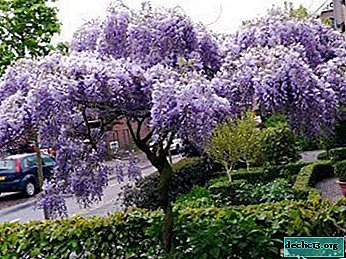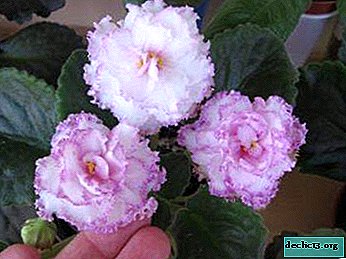What is white phalaenopsis and how to care for it? Tips for novice florists
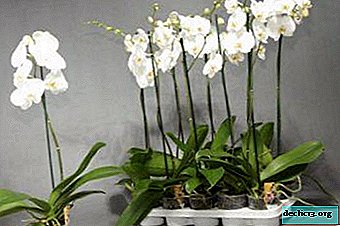
There are many types of orchids of various shapes and colors, and all of them are beautiful in their own way. However, white phalaenopsis immediately attracts the eye with its delicate coloring. This amazing flower looks like butterfly wings with its petals.
In this article you will learn about the history of the creation of this hybrid, about the features of its cultivation, its care and possible problems of cultivation. We also recommend that you watch a useful and interesting video on this topic.
What kind of flower is this?
This flower has three names: phelanopsis, butterfly orchid and white orchid. This is a tropical plant of the epiphytic genus, which means it has aerial roots and uses other plants for support. Also, white orchids are standard (height up to 1 m) and miniature (height up to 30 cm).
- The flowers of the plant resemble moths in their shape, hence one of the names of this orchid came from.
- Blooms up to three times a year.
- Petals do not have to be white - phelanopsis can be of any other color, and also have intersperses of red, yellow, green or pink.
- It has a developed root system, but there are no pseudobulbs.
History of Variety Breeding
 The history of the development of this type of orchid went in two directions - for cutting flowers and for potting. Homeland is South and Southeast Asia. From there, the orchid was introduced and selected in other climatic conditions.
The history of the development of this type of orchid went in two directions - for cutting flowers and for potting. Homeland is South and Southeast Asia. From there, the orchid was introduced and selected in other climatic conditions.
The first orchid hybrid was bred back in 1875 by John Seden. It bloomed only nine years later. By 1900, another 13 varieties of phelanopsis were created. A little later, in 1927, the Phal variety was created. Elisabethae, having a denser structure, exceeded its predecessor in size as well as in aesthetics.
IMPORTANT: In the period from 1930 to 1950, it was Grexes with white flowers that were most popular. The reason for this was the improvement of this variety - now it had larger flowers of a pure white color, and the plant itself had a long arrow with a lot of peduncles.After the peak of popularity of white phelanopsis passed, breeders began to make a bias in the development of this species specifically for home maintenance. The reason for this was an increase in demand for potted orchids - many wanted to keep such a beautiful plant at home.
Today, work on the creation of new varieties continues - they acquire improved qualities, becoming more unpretentious, change the color of flowers and their sizes, but, in spite of everything, orchid still remains one of the most beautiful and sought-after plants on the market.
Phalaenopsis Care
Having acquired such a plant, you need to know how to care for it when to transplant and fertilize. Phelanopsis is one of the most unpretentious species from its family, so it is not so difficult to care for it.
Lighting
The main factor for an orchid is the availability of a sufficient amount of diffused light. The best option for a white orchid will be the southeastern or eastern part of the house - on such windowsills the flower will not get burns from the scorching sun, but at the same time it will receive the necessary amount of sunlight.
For phalaenopsis, only transparent pots are suitable - not only leaves, but also roots are involved in the photosynthesis of this plant.
Temperature
The daily norm should not exceed 27 degrees, and the night should not fall below 16 degrees. Before you put the plant in its place, you should make sure that there are no drafts. Phelanopsis can easily get sick because of them.
Watering
Watering a flower is carried out only when the soil is dry. In no case should you fill the orchid, otherwise its roots will rot and the flower may die.
ATTENTION: You also can’t overdry it - in this case, the roots and leaves will dry out, and it can be very difficult to reanimate a plant. In summer it is recommended to water once every 3-4 days, and in winter every 7-9 days.Watch the video about the proper watering of phalaenopsis:
Humidity
 The humidity around the orchid should be at least 60%. Otherwise, the flower will not receive enough moisture and may become sick. If the air in the room is too dry, it is recommended to place a container of water near the pot or spray the area around the orchid. Such supportive measures are necessary when humidity is below 40%.
The humidity around the orchid should be at least 60%. Otherwise, the flower will not receive enough moisture and may become sick. If the air in the room is too dry, it is recommended to place a container of water near the pot or spray the area around the orchid. Such supportive measures are necessary when humidity is below 40%.
When spraying, it is necessary to ensure that water does not fall into the middle of inflorescences or rosettes of leaves - this threatens to rot. Excess moisture should be removed from the surface of the plant.
Watch a video on ways to increase the moisture around orchids:
Substrate
In order for the orchid to feel comfortable, it needs a special loose substrate. It can be purchased at the store, or you can cook it yourself. The composition must necessarily include such elements as:
- Pine bark (resin free).
- Moss Sphagnum.
- Chopped walnut shell.
Transfer
Phelanopsis does not tolerate transplant well, therefore, it should be carried out only as necessary. It occurs if:
- There is rotting of the roots.
- The substrate has deteriorated and needs to be replaced.
- The plant is affected by pests.
- Roots crawl out of the pot (it became small for an orchid).
- Instability of the pot (falls under the weight of the plant).
If a transplant is necessary, then it is performed according to the following algorithm:
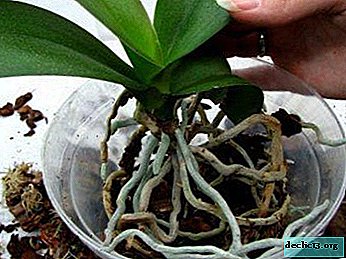 The plant is carefully removed from the pot. If necessary, you can soak it in water for an hour, then the dried-up roots easily move away from the walls.
The plant is carefully removed from the pot. If necessary, you can soak it in water for an hour, then the dried-up roots easily move away from the walls.- The roots are cleaned of residual substrate (can be washed under clean warm water).
- Sharp, disinfected scissors or a knife cut obsolete or damaged roots and leaves.
- Places of cuts are necessarily processed with crushed activated carbon.
- The plant is dried at room temperature for an hour.
- In a new pot, drainage is placed at the bottom (stones or pieces of brick), a substrate is laid on it at about two-thirds of the height of the pot.
- The orchid is carefully placed in a flowerpot and its roots are gradually sprinkled with the remains of the substrate (empty spaces between them are filled). It is important not to deepen the plant into the ground - the base of the lower leaves should be on the surface.
- After transplanting, the flower is not watered for 3-4 days, giving it time to adapt
The soil can not be crushed and compacted, it must be laid out in a cache-pot. Otherwise, this will lead to problems with orchid roots in the future.
Watch the video about the correct orchid transplant:
Top dressing
This process does not depend on the season, but on the state of the orchid. There are flower conditions in which you can feed:
- Orchid in the leaf growth phase.
- It does not have rot and other diseases.
- The beginning of flowering, the formation of buds.
- Plants grown without soil or on a fully artificial substrate (weekly top dressing).
- When watering with distilled water.
The optimal formulations for feeding are Schultz or Forte fertilizers.. Both compositions are universal and suitable for all types and varieties of orchids. They are available in liquid, concentrated form, therefore, before feeding, you should familiarize yourself with the instructions. Bona Forte for NPK orchids in a ratio of 4: 2.5: 6 dilute 5 ml in 1.5 liters of water. Schultz orchids NPK 19% -31% -17%, 0.5 tsp each. to 3 liters of water.
Watch the video about the proper feeding of orchids:
Photo
Next you will see a photo of white phalaenopsis.





Pests and diseases
Sometimes, even with the most careful care, it is not possible to avoid the invasion of pests, which can not only weaken, but also destroy the flower:
- Thrips, scale insects, mealybugs, whitefly - all of them negatively affect the plant. They should be fought with insecticides, for example, actar or confidor. These products are diluted in water according to the instructions.
- Such arthropod pests like wide, arachnoid and cyclamen mites require a different approach. Any ticks should be treated only with acaricides, alternating with different active ingredients.
- Among orchid diseases, rot most often appears. This comes from over watering the plant. To treat such a plant is quite difficult, because the microorganisms that appear when rotting spread to the entire flower.
- Also among the most common diseases are sunburn and frostbite. In the first case, the orchid is easy to go out - it is necessary to ensure optimal conditions. The second situation is much more complicated and the plant often dies.
Conclusion
Although the orchid requires a lot of strength and certain conditions, it does not affect its popularity. Delightful flowers are worth the effort, and the adaptation of hybrids for home maintenance greatly simplifies plant care.

 The plant is carefully removed from the pot. If necessary, you can soak it in water for an hour, then the dried-up roots easily move away from the walls.
The plant is carefully removed from the pot. If necessary, you can soak it in water for an hour, then the dried-up roots easily move away from the walls.



